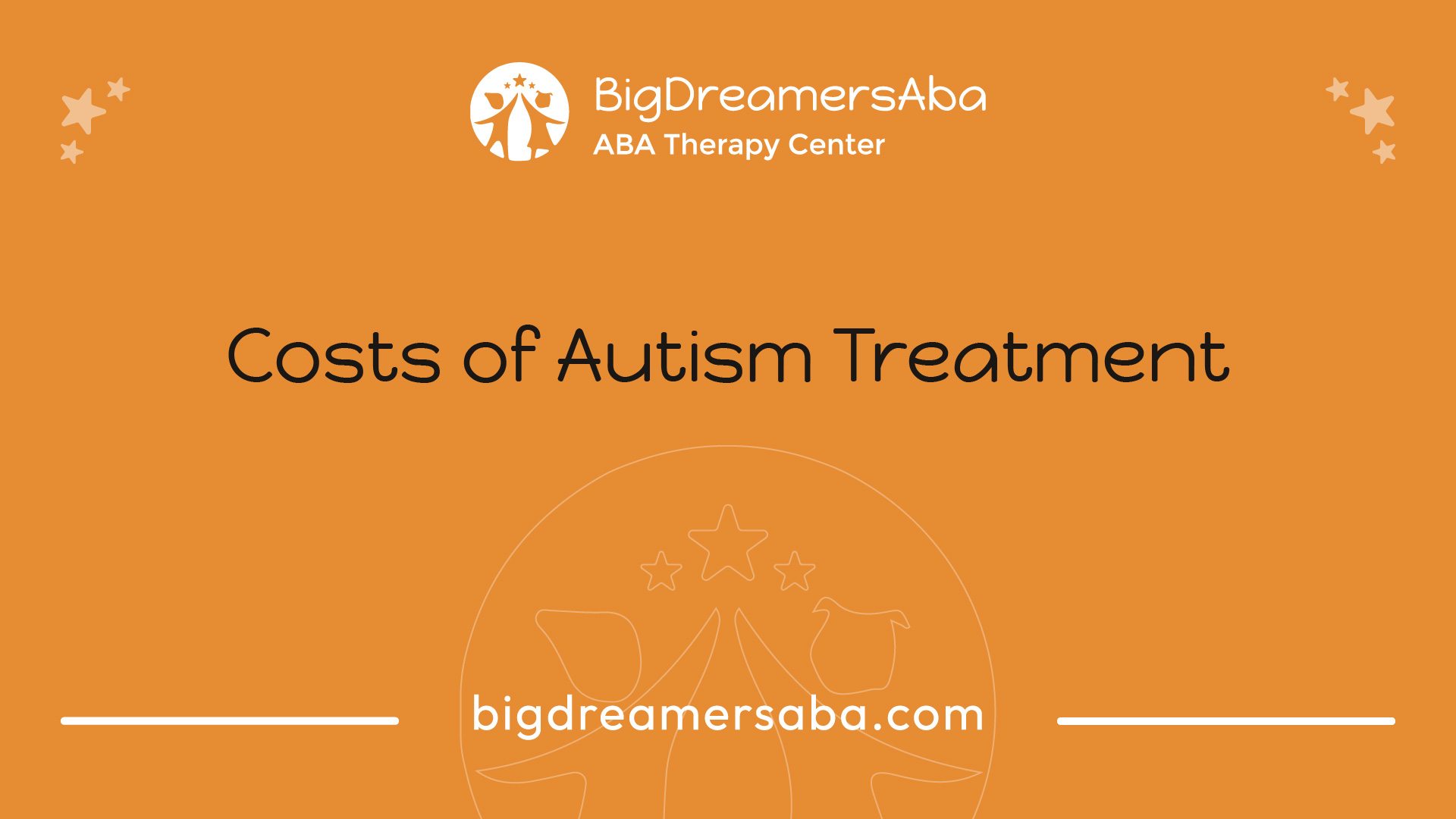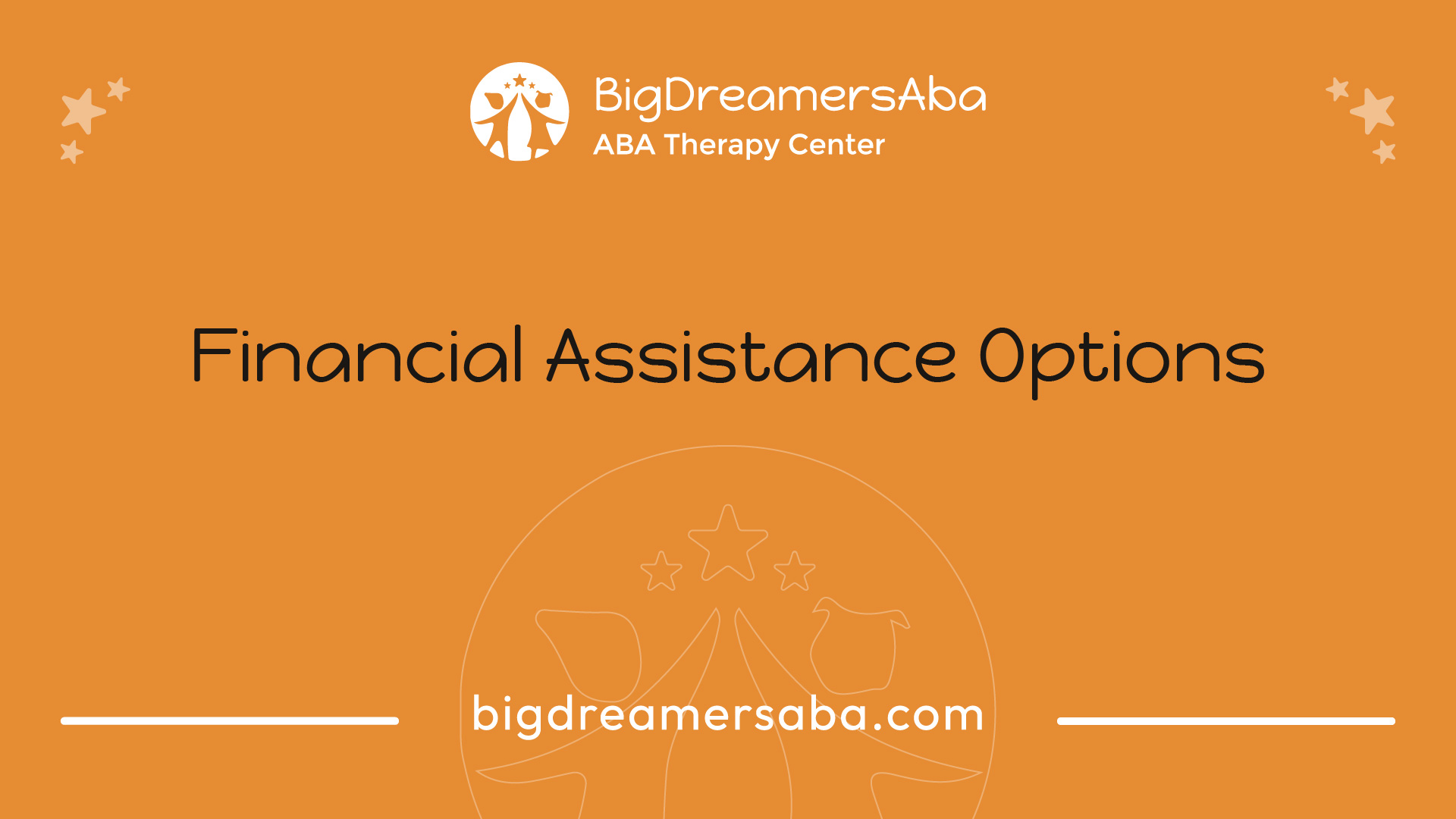Exploring the Cost of Autism Treatment
Unraveling the cost of autism treatment: from ABA therapy to insurance coverage, discover affordable care options for your loved ones.

Types of Autism Treatment
When it comes to the treatment of Autism Spectrum Disorder (ASD), there are various approaches available that aim to address the unique needs of individuals on the spectrum. These approaches can be categorized into behavioral, developmental, educational, pharmacological, and psychological treatments.

Behavioral Approaches
Behavioral approaches, such as applied behavior analysis (ABA), are widely accepted and commonly used for treating symptoms of ASD. ABA focuses on analyzing and modifying behavior by using positive reinforcement and teaching new skills. It is often implemented in schools and treatment clinics, where progress is tracked and measured. By targeting specific behaviors and providing structured interventions, individuals with ASD can develop important skills and improve their overall functioning.
Developmental Approaches
Developmental approaches encompass therapies that focus on improving language skills, physical skills, and daily living activities. Speech and language therapy help individuals with ASD improve their communication abilities, while occupational therapy assists in refining motor skills and promoting independent living. These therapies are designed to address the unique developmental challenges faced by individuals with ASD and enhance their overall quality of life [1].
Educational Treatments
Educational treatments play a vital role in supporting individuals with ASD in academic settings. The Treatment and Education of Autistic and Related Communication-Handicapped Children (TEACCH) approach is a widely recognized educational program that provides structured teaching methods tailored to the needs of individuals with ASD. The goal of educational treatments is to improve academic performance, social skills, and adaptive behaviors, enabling individuals with ASD to thrive in educational environments [1].
Pharmacological Approaches
Pharmacological approaches may be utilized to manage co-occurring symptoms in individuals with ASD. Medications can help address issues such as high energy levels, inability to focus, self-harming behavior, anxiety, depression, seizures, and sleep problems. It is crucial to work with a doctor experienced in treating ASD when considering medication, as they can carefully assess the benefits and potential risks associated with specific medications and develop an individualized treatment plan.
Psychological Approaches
Psychological approaches, such as cognitive-behavior therapy (CBT), can be beneficial for individuals with ASD who experience mental health issues, including anxiety and depression. CBT focuses on changing thoughts, feelings, and behaviors through structured therapeutic interventions. By teaching individuals coping strategies and providing support, psychological approaches can help improve emotional well-being and overall mental health in individuals with ASD.
Understanding the different types of autism treatment is essential for individuals with ASD and their families to make informed decisions about which approach may be most suitable for their specific needs. Each treatment approach has its own benefits and considerations, and a comprehensive treatment plan often combines multiple approaches to provide comprehensive support and intervention for individuals on the autism spectrum.
Costs of Autism Treatment
When it comes to autism treatment, understanding the associated costs is an important consideration. The financial burden of treatment can vary depending on the specific therapies and services required. In this section, we will explore the average lifetime costs of autism treatment, as well as the costs of ABA therapy, speech therapy, and occupational therapy. We will also discuss the role of insurance coverage in mitigating these expenses.

Average Lifetime Costs
The lifetime costs of autism treatment can be significant. According to a study conducted in 2015, the average lifetime cost for a person with autism and intellectual disability was $2.4 million in the United States. For individuals with autism without intellectual disability, the average lifetime cost was $1.4 million in the same year [2].
Cost of ABA Therapy
ABA therapy (Applied Behavior Analysis) is a widely used and evidence-based approach for treating autism. The cost of ABA therapy can vary depending on factors such as location, provider expertise, and the number of hours required. On average, ABA therapy can range from $120 to $150 per hour. Without insurance coverage, the cost of ABA therapy can range from $240 to $600 per day, $1,200 to $4,800 per week, and $4,800 to over $20,000 per month.
Cost of Speech Therapy
Speech therapy is often a crucial component of autism treatment, as it helps individuals improve their communication skills. The cost of speech therapy can vary based on factors such as location, therapist expertise, and session duration. On average, speech therapy sessions for children with autism can range from $100 to $250 per hour. It's important to note that the frequency and duration of therapy sessions may vary depending on the individual's needs and goals [2].
Cost of Occupational Therapy
Occupational therapy aims to enhance an individual's ability to perform daily activities and develop skills for independent living. The cost of occupational therapy for individuals with autism can also vary based on factors such as location, session duration, and therapist experience. On average, occupational therapy sessions can range from $100 to $200 per hour. The frequency and duration of therapy sessions will depend on the individual's specific needs and treatment plan.
Insurance Coverage
Insurance coverage, particularly through Medicaid, can play a significant role in mitigating the financial burden of autism treatment. Medicaid-covered individuals often have lower estimated average medical costs per year compared to those with private insurance. It's crucial to explore the coverage options available and understand the extent of coverage provided by your insurance plan. Seeking guidance from insurance professionals or advocacy organizations can help navigate the complexities of insurance coverage and maximize the available benefits.
Understanding the costs associated with autism treatment is an essential step in planning for the financial aspects of therapy. It's important to consider the individual needs of the person with autism and explore available resources, such as financial assistance programs, tax deductions, and credits. By exploring various options and seeking support, individuals and families can access the necessary treatment while managing the associated costs.
Financial Assistance Options
When it comes to the cost of autism treatment, there are various financial assistance options available to help ease the financial burden. These options provide support for families seeking to provide their loved ones with the necessary care and services. Let's explore some of the key financial assistance options and programs that can help alleviate the costs associated with autism treatment.

Medicaid Coverage
Medicaid plays a significant role in mitigating the financial burden of autism treatment. It is a government program that provides health coverage to individuals and families with low income and limited resources. Medicaid coverage varies by state, but in most states, children with qualifying disabilities who receive Supplemental Security Income (SSI) are automatically eligible for Medicaid. Medicaid coverage can help cover a wide range of autism treatment services, including behavioral therapies, speech therapy, occupational therapy, and more.
Supplemental Security Income (SSI)
Supplemental Security Income (SSI) is a federal program that provides monthly cash payments to children with qualifying disabilities whose families meet low income and asset requirements. If the child meets the SSI disability standard and the family meets the income and asset limits, the child may receive a monthly SSI payment of up to $733. These payments are intended to help families meet their child's needs, including the costs associated with autism treatment.
Tax Deductions and Credits
Parents of children with autism may be eligible for certain tax deductions and credits that can help offset the costs of treatment. For example, the Medical Expenses Tax Deduction allows families to deduct qualifying medical expenses, including autism treatment expenses, that exceed a certain percentage of their adjusted gross income. Additionally, the Child and Dependent Care Tax Credit may provide a credit for a portion of the expenses incurred for child care, including care related to autism treatment. It's important to consult with a tax professional or review the latest tax guidelines to understand the specific deductions and credits available in your situation.
Veteran's Aid and Attendance
For military families with a child with autism, the Veteran's Aid and Attendance program may provide financial assistance. This program provides additional financial support to eligible veterans and their families who require the aid and attendance of another person for their daily activities. The financial assistance can be used towards the costs of autism treatment and related services.
Children's Health Insurance Program (CHIP)
The Children's Health Insurance Program (CHIP) is a state-funded program that provides comprehensive health coverage, including dental care, to individuals under the age of 19 whose families cannot afford private insurance but do not qualify for Medicaid. CHIP typically does not have an asset limit, and eligibility is based on income. This program can help cover the costs of autism treatment for children who meet the eligibility criteria.
Exploring these financial assistance options can provide families with the support they need to access and afford the necessary autism treatment. It's important to research and understand the specific requirements and benefits of each program to determine eligibility and maximize the available assistance. Additionally, reaching out to local support organizations and advocacy groups can provide further guidance and resources for navigating the financial aspects of autism treatment.
International Perspectives on Autism Treatment Costs
The costs associated with autism treatment can vary significantly across different countries. Understanding the international perspectives on autism treatment costs can provide valuable insights for individuals seeking appropriate care. Here, we explore the costs of autism treatment in the United States, United Kingdom, Australia, Canada, and Japan.
United States
In the United States, the average annual costs of autism treatment can be substantial. Based on available data, the average cost per patient per year is approximately $17,081 [4]. Furthermore, the lifetime cost for a person with autism and intellectual disability averaged $2.4 million in 2015. For individuals with autism without intellectual disability, the lifetime cost averaged $1.4 million in the same year. These figures highlight the financial impact of autism treatment on families and the importance of exploring financial assistance options.
United Kingdom
In the United Kingdom, the average annual costs of autism treatment are comparatively lower. Based on available data, the average cost per patient per year is approximately $8,632. Several factors, including the healthcare system and government support, contribute to the relatively lower costs in the UK. However, it is essential to consider that individual circumstances and treatment requirements can vary, impacting the overall costs for families.
Australia
Australia also offers more affordable autism treatment compared to the United States. The average cost per patient per year in Australia is approximately $7,599. The Australian government provides various funding programs and support services to assist families in accessing necessary treatments. Additionally, specific regional programs, such as the Family Support for Children with Disabilities (FSCD) Act in Alberta, help provide needs-based funding for children and youth with developmental conditions [6].
Canada
In Canada, the average annual costs of autism treatment are even lower than in Australia. Based on available data, the average cost per patient per year is approximately $5,627. The Canadian government offers various programs and funding options to support families in accessing autism treatment. For example, the Ontario Autism Program (OAP) provides childhood budgets that can be used to cover eligible services, including Applied Behaviour Analysis (ABA) therapy, speech-language pathology, and occupational therapy.
Japan
Japan has relatively lower costs for autism treatment compared to other countries. Based on available data, the average cost per patient per year in Japan is approximately $4,577 [4]. The Japanese government provides support programs and services to assist families in accessing necessary treatments for individuals with autism. It is important to note that the specific costs and availability of services can vary within different regions of Japan.
Understanding the international perspectives on autism treatment costs can help individuals and families make informed decisions about their options. It is crucial to consider the individual needs of each person with autism and explore available financial assistance programs, insurance coverage, and support systems to alleviate the financial burden associated with autism treatment.
Additional Support Programs
In addition to the various types of autism treatment available, there are several support programs that aim to assist families with the costs associated with autism treatment. These programs vary by region and offer different forms of financial aid and resources. Here are some notable support programs:
Family Support for Children with Disabilities (FSCD) Act
In Alberta, the Family Support for Children with Disabilities (FSCD) Act, established in 2004, provides needs-based funding for children and youth under 18 with developmental, physical, sensory, mental, or neurological conditions. The funding amount and level of support are based on the unique needs of each family and child, with no standard funding amount for children with an autism diagnosis [6].
Ontario Autism Program (OAP)
In Ontario, the Ontario Autism Program (OAP) offers childhood budgets providing up to $20,000 annually per child under age six and $5,000 annually per child aged six and older. Families can use this funding to purchase eligible services such as Applied Behaviour Analysis (ABA) therapy, speech-language pathology, occupational therapy, and more.
Preschool Autism Funding
In Prince Edward Island, preschool autism funding is available to help hire an Autism Assistant for children receiving Intensive Behavioural Intervention (IBI) support. The funding can cover Autism Assistant wages and benefits up to $13.18 per hour, for a maximum of 25 hours per week.
Government Programs in Quebec
In Quebec, there is a significant lack of funding for autism programs and resources, resulting in long wait lists and fragmented provincial services. However, in 2003, the Government of Quebec allocated $18 million in its budget for autism and Persons with Developmental Disabilities (PDDs).
Shelter Allowance Program
The Shelter Allowance Program provides financial aid of up to $80 per month to low-income families who spend a significant portion of their income on lodging. Eligibility requires filing an income tax report [7].
These additional support programs aim to alleviate some of the financial burdens associated with autism treatment. Families should research and explore the available programs in their respective regions to determine eligibility and access the support that best suits their needs.
Complementary and Alternative Treatments (CATs)
In addition to traditional treatments, many individuals and families explore complementary and alternative treatments (CATs) to address the symptoms associated with Autism Spectrum Disorder (ASD). While CATs may not be supported by extensive scientific evidence, some have shown promising results and are commonly used alongside conventional interventions. Let's take a closer look at a few CATs that are frequently considered:
Melatonin
Melatonin is one of the most extensively studied CATs for individuals with ASD. It is primarily used to improve sleep duration and onset latency in children with ASD. Research has shown that melatonin supplementation can help regulate the sleep-wake cycle and improve overall sleep quality NCBI. It is important to note that the use of melatonin should be under the guidance of a healthcare professional, as appropriate dosage and timing are crucial.
High-Dose Pyridoxine and Magnesium Supplementation
Another CAT that has garnered attention is high-dose pyridoxine (vitamin B6) and magnesium supplementation. Some studies have suggested that this combination may lead to improvements in social interactions, communication, and stereotyped behaviors in children with ASD. However, further research is needed to fully understand its effectiveness and determine the optimal dosage.
Common Reasons for CATs
Parents and individuals often consider CATs for various reasons, including concerns about medication safety and side effects. Many individuals with ASD may have unique sensitivities and reactions to certain medications, leading families to explore alternative options that they perceive as safer. However, it is crucial to consult with healthcare professionals before making any decisions or starting CATs, as these treatments may interact with other interventions or medications.
Global Usage of CATs
CAT usage for ASD varies globally. Studies have reported CAT usage rates ranging from 32% to 87% in the United States, 52% in Canada, and 41% in China. Even before receiving a formal ASD diagnosis, approximately one-third of parents already utilize dietary CATs. CATs provide a diverse range of options that individuals and families explore to address the unique needs and challenges associated with ASD.
Interactive Autism Network's Findings
The Interactive Autism Network conducted an online survey and found that parents reported using a total of 381 different treatments, most of which were CATs, for children with ASD. On average, each child received about five different treatments NCBI. This highlights the wide range of CATs being utilized and the individualized approach families often take when seeking treatments for ASD.
While CATs may offer potential benefits, it is essential to approach them with caution and consult healthcare professionals who specialize in ASD treatment. The effectiveness and safety of CATs can vary, and what works for one individual may not work for another. Open communication with healthcare providers and adherence to evidence-based interventions are key to ensuring the well-being and progress of individuals with ASD.
References
[1]: https://www.cdc.gov/autism/treatment/index.html
[3]: https://www.specialneedsalliance.org/blog/government-programs-for-children-with-disabilities/
[5]: https://www.myteamaba.com/resources/cost-of-autism-treatment
[6]: https://aidecanada.ca/resources/learn/financial/under-18-supports
[7]: https://autisme-montreal.com/en/help-for-parents/financial-aid/
Recent articles

How Parent Training Enhances Therapy Outcomes for Children

The Benefits of One-on-One ABA Therapy Sessions
